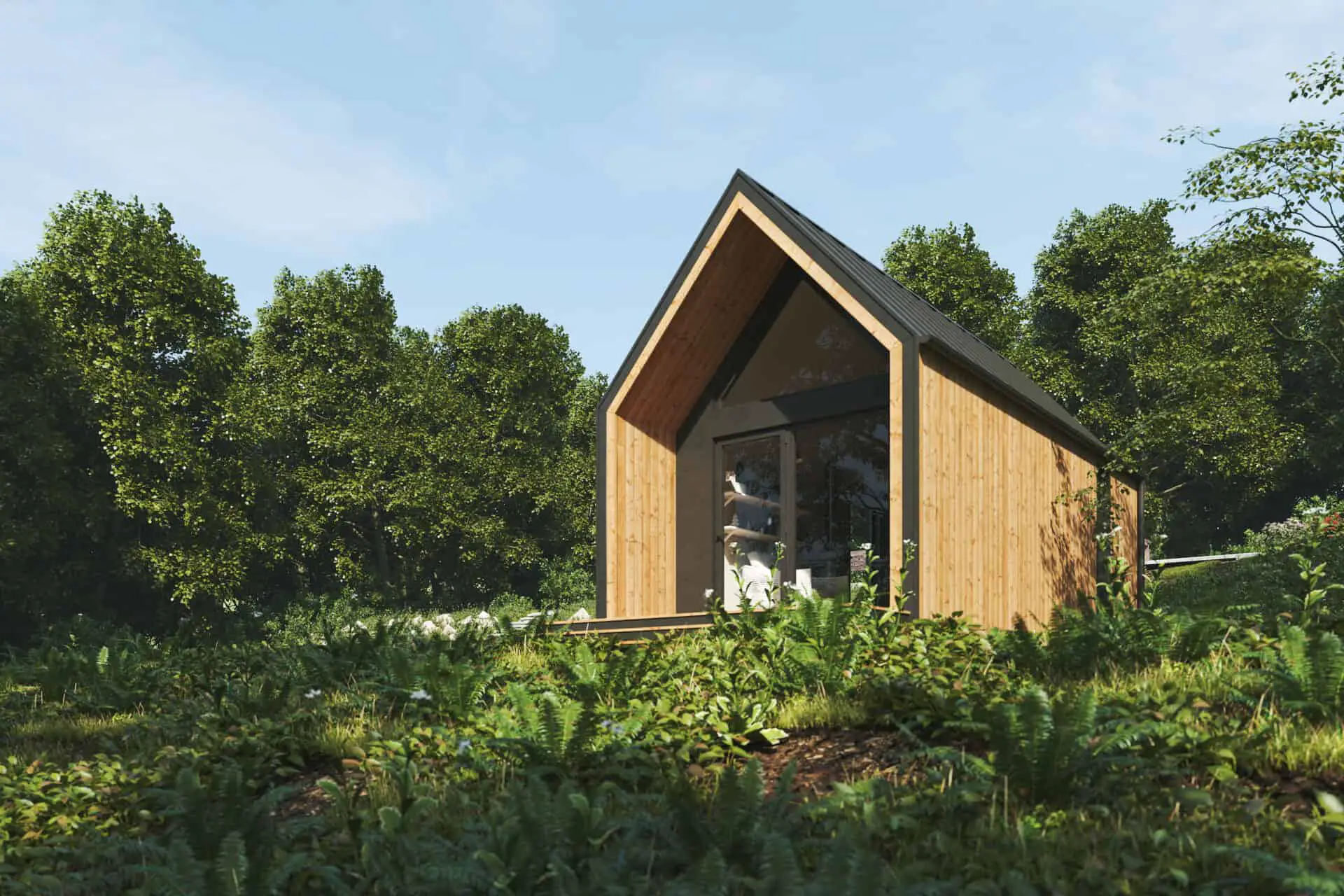Setting a modular home to its foundation takes about 2 days, though this duration refers to the attachment work alone. In order to attach the modules, the foundations have to first be built, considerably increasing the length of the works. Still, this period rarely adds to the overall modular home construction timeline. Since modular homes are constructed off-site, it is common for the foundations to be built simultaneously with the manufacturing of the modules.
| Duration | |
| Build the foundations | 8 to 16 weeks |
| Module delivery | about 1 day |
| Assembly of the modules on the foundation | 1 to 2 days |
Building the foundations
The time required to build the foundations fluctuates depending on the type of foundation chosen. Modular homes can be attached to a variety of different types of permanent foundations: some, such as concrete slabs, are quite easy to install and could be finished in just 8 weeks [1][2]; while foundations that require a deeper excavation, like basements, can take around 16 weeks to be completed [1][2]. The duration usually depends on the complexity of the works, though generally, the process of building a foundation is quite similar among the different types.
- Cleaning and leveling of the land: Before any construction works can start, the land has to be properly cleaned: removing objects, rocks, vegetation, or even old constructions is key to preparing the plot. Also, since most modular home designs require a flat surface, it is common to level the ground to place the foundation on a horizontal set.
- Excavation and compacting: While the most common foundation types utilized for modular homes are shallow foundations such as a concrete slab [3], some digging is necessary to ensure the solidity of the house’s base. Once the excavation is done, the soil is compacted to increase its strength [4].
- Install protections: Adding a layer of gravel and a waterproof membrane helps prevent water damage to the foundation and the modular home.
- Build the foundation: The most common foundations are made of reinforced poured concrete. That often requires framing the area with formwork panels, laying the steel bars, and pouring the concrete.
Module delivery
Every module has to be delivered from the manufacturing plant where they have been built to the property where they will be attached permanently. The shipment is generally completed in one day, though this duration depends on the distance between the manufacturer and the plot. Given the vast dimensions of the modules, there should be some delivery preparation.
- Module protection: Once the modules are manufactured, they are carefully wrapped and loaded onto an I-beam carrier to be safely delivered by a flatbed truck.
- Positioning of the crane: The crane required to maneuver the modules is huge and its assembly and positioning usually take some time. [5]. This required time should be considered, especially if in a tight schedule since it can delay the assembling process.
- Road preparation: Sometimes it might be required to build an access road that is suitable for large loads and allows the truck carrying the big-sized module to drive through and maneuver if necessary [6].
Assembly of the modules on the foundation
Once the modules are on-site, assembling takes place and it usually takes as short as just 1 to 2 days [1][2]. Each block is securely attached to the foundations as well as joined together to create the complete house volume.
- Preparing the modules for their assembly: The protections in which every module is wrapped before leaving the factory are removed so that the necessary straps and cables required to lift the module can be placed.
- Crane works: A crane lifts the module using the installed straps and places the module in its defined location on the foundations and within the previous modules [7].
- Anchoring the modules to the foundations: The modules are attached to the foundations through anchoring systems such as nailing plates or bolts, and once connected will only need to be screwed or welded to fasten the modules to the foundations.
References:
- You have questions, we have answers BluHomes https://www.bluhomes.com/fact-sheet
- Discover a better way to build your home Plant Prefab https://www.plantprefab.com/homebuyers/#process
- (2022, February 7) The Types of Prefab Home Foundations That Must Be Used Build Green NH https://buildgreennh.com/types-of-prefab-home-foundations/
- Weser, J. (2020, July 20) The importance of soil compaction in construction Mintek Resources https://mintekresources.com/importance-of-soil-compaction-in-construction/
- Crane for Modular Buildings Your crane company https://craneguys.com/construction/crane-for-modular-buildings/
- Standard Unit Geometrics Section Traffic and Safety Division (1969 May) Turning Path Determination Procedure. A study to verify Predicted Turning Paths TSD-G-115-69 Traffic and Safety Division. Michigan Department of State Highways LANSING https://www.michigan.gov/documents/mdot/RR200TS_2_534137_7.pdf
- Semler, K. How does a modular home get assembled? – Part II: Set day Impresa Modular https://impresamodular.com/how-does-a-modular-home-get-assembled-part-ii/



